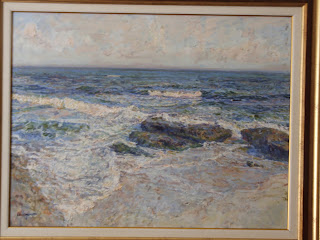I have a week or so to update the paper I delivered at the Varna Conference on 20 May – my critique of the sort of advice in institution- building which is dished out by western consultants and the procurement procedures which the EC uses for that. So this morning I was having another look at it - building in some references which I had missed (such as Tony Verheijen’s 2007 World bank paper Administrative Capacity in the New Member States – the limits of innovation?; and trying to get a more coherent ending to the paper.
This year there is no guarantee that the paper will be published – NISPAcee funds are running low. However, last week I receives a letter suggesting that I submit it as a possible contribution to The Journal of US-China Public Administration.
Some posts back, I mentioned an excellent panel discussion of central european developments of the past 20 years Is Europe’s democratic Revolution Over? Reference was made during that discussion to Ralf Dahrendorf’s prescient comment (in an extended public letter he wrote in 1990 and published under the title Reflections on the Revolution in Europe) that it would take one or two years to create new institutions of political democracy in these recently liberated countries, maybe five to 10 years to reform the economy and make a market economy, and 15 to 20 years to create the rule of law. And it will take maybe two generations to create a functioning civil society.
A Czech panellist (who had been an adviser to Vaclav Havel) suggested that
what we see now is that we have completed the first two stages, the transformation of the institutions, of the framework of political democracy on the institutional level, there is a functioning market economy, which of course has certain problems, but when you take a look at the third area, the rule of the law, there is still a long way to go, and civil society is still weak and in many ways not very efficient.He then went on to make the useful distinction
between democracy understood as institutions and democracy understood as culture. It’s been much easier to create a democratic regime, a democratic system as a set of institutions and procedures and mechanism, than to create democracy as a kind of culture – that is, an environment in which people are actually democratsI find most Chinese novels I get hold very gripping to read. Is this perhaps something to do with the repressions and incredible madnesses (of a Hieronymus Bosch sort) they have experienced in the past 100 years? I’ve just finished Ye Zhaoyan’s Nanjing 1937 – a Love Story which led me to check the precise location of the city – and the evil events of December 1937 when about 250,000 defenceless Chinese were massacred by Japanese soldiers. Thus I learned of The good German of Nanjing - John Rabe who (as Chairman of a hurriedly assembled International Committee for the Nanjing Safety Zone; and as Head of the local Nazi association) saved a similar number by creating a safe zone and facing down marauding Japanese on numerous occasions (by flashing his swastika pass). Last September I wrote about the similar courageous role played by an American (Asa Jennings) in September 1922 when Greek residents of Smyrna were being massacred. Rabe's achievement and heroism went for naught for the Brits whose actions reduced him to dire poverty in the denazification programme in post-war Berlin – but the citizens of Nanjing did not forget him and for the last few years of his life sent money and food to him in Berlin before he died of a heart attack in 1950.
Such people are the real heroes - but they are generally lost to us all. When reviewing Robert Fisk's huge book on the Middle-East conflicts, I made the comment that this should be the stuff of case-studies in public admin teaching - to remind us that we are human beings and that principles should triumph over rationalistic calculations!
The large oil painting on the Nanjing massacre was done a decade ago by Li Zijiang




